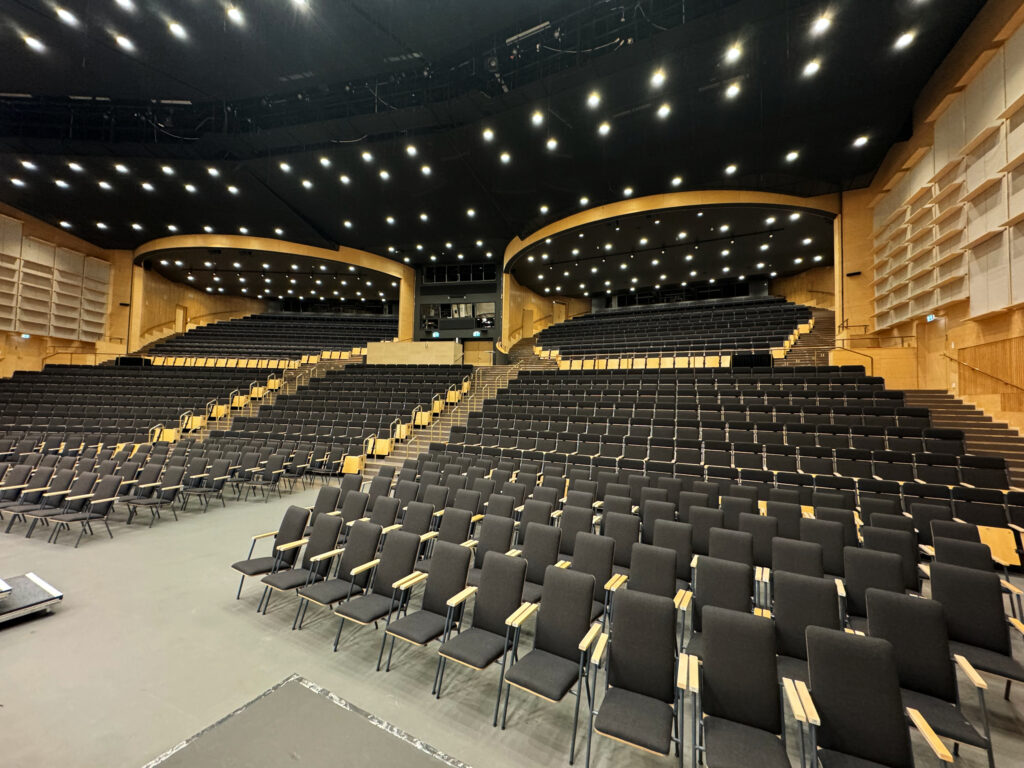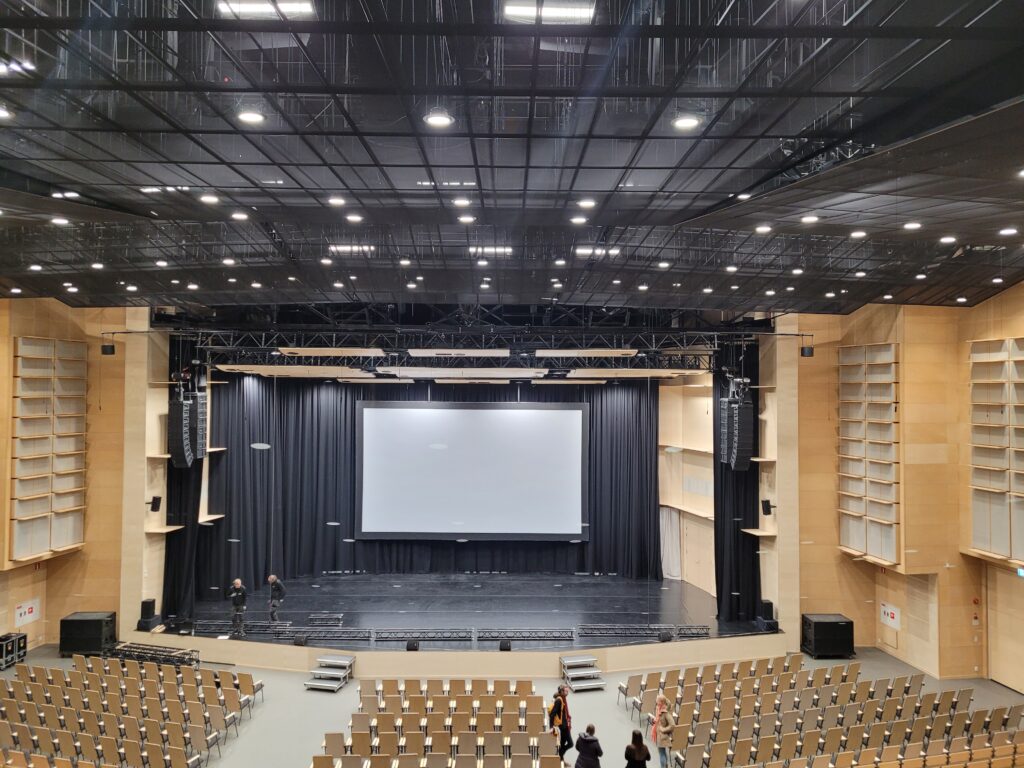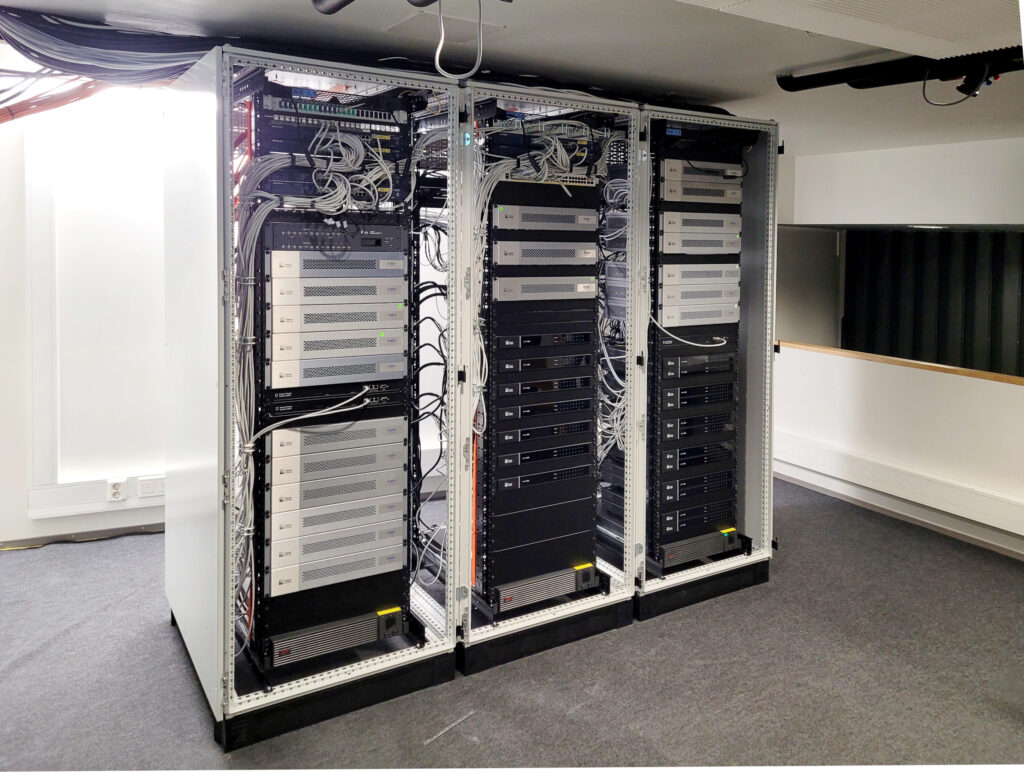The renovated Encore Hall will delight you with good sound
Wilhelm hall in Jyväskylä, the capital of Central Finland, was a conference and seminar hall which was converted into a multipurpose hall suitable for performing classical music as well. The acoustics of the hall was renovated and the name of the hall was changed to Encore hall. Now also classical music sounds great!
Symphony orchestra Jyväskylä Sinfonia is a gem of classical music in Central Finland. The orchestra’s nearly 120 events reach more than 35,000 listeners every year. Since there has been no concert hall designed for acoustic music in the town, Jyväskylä City Theatre has been the home of both the theatre and the orchestra.
As the renovation of the city theatre approached, preparations began to modify the Wilhelm Hall also for use of the Jyväskylä Sinfonia in addition to its use as a conference hall. Therefore, they started to find out what could be done to the hall’s acoustics to make it suitable for classical music as well.

The starting point was a speech and seminar hall
Speech intelligibility is essential in a meeting and seminar hall, and the Wilhelm Hall has received a much praise for its excellent speech acoustics. However, the room acoustics of such a hall is unsuitable for acoustic orchestral music - reverberation and reflections are missing, or they come from the wrong directions and at the wrong time. The musicians cannot properly hear their own playing let alone the playing of the rest of the orchestra, and the audience's concert experience isn't good.
The room acoustics of a hall intended for speech is typically better suited for electronically amplified music than for acoustic music. However, in a hall intended for a symphony orchestra and other acoustic music, room acoustics specifically suitable for these types of music is needed. Both the orchestra and the audience must hear all the instruments with sufficient clarity. Musicians on the stage must hear not only their own playing, but also that of other musicians, as well as a suitable amount of room reflections and reverberation.
The soundscape created by the orchestra and the hall must be immersive and rich. The audience should hear the entire orchestra in a balanced manner. Details and nuances must also be sufficiently audible. At the same time, it should be possible to hear the essence of the hall. Reflections and reverberation bind the music enriching the sound as intended by the composer, conductor and the musicians.
The Wilhelm Hall was too wide for a concert hall
We started to find out the possibilities for improving the acoustics. In the initial phase, Akukon's acousticians Henrik Möller and Jukka Pätynen made investigations. Also Akukon's partner, acoustician Echard Kahle from Belgium, was involved in the work.
When the hall was examined, several significant observations were made. From the audience's perspective the hall was far too wide for the necessary lateral reflections to form between the side walls to create a good sound image.
The suspended ceiling was located low reducing the overall volume significant for reverberation. In principle, the volume would have been sufficient for an acoustic music hall, but a large part of the volume was above the solid, plasterboard-constructed upper ceiling.
The acoustic and ergonomic well-being of the musicians was not adequate. The orchestra didn't properly fit on the stage, and the musicians couldn't hear their own playing well enough, not to mention the rest of the orchestra.
The width of the hall was the most important factor, which is why electroacoustics was chosen as the main design approach. The side walls could not be moved inward or substantially reshaped, but with the help of electroacoustics it was possible to create reflections and reverberation, which, as the audience hears, corresponds to that produced by a properly shaped concert hall.
The structures of the hall were also changed

In addition to the actual acoustics, planning the renovation of the Encore Hall involved many different tasks, e.g. hall structures, stage mechanics and performance technical cabling.
Uli Jetzinger was the design project manager at Akukon, Sami Reina the acoustics and AV designer, and Toni Silvola the mechanical designer.
With electroacoustics, reflections and reverberation can be increased, but not reduced. For this reason, the hall's own, natural reverberation should be quite low. In the case of Wilhelm Hall, this requirement was largely met naturally. However, the hall's room acoustics were modified to be more suitable for electroacoustics by replacing the solid ceiling with an acoustically permeable structure. In addition, damping surfaces were added in selected places. This created a good foundation for the implementation of electroacoustics.
The orchestra needed more space, and the musicians' own audibility had to be improved. Space was created by moving the back wall of the performance area backward. Audibility was improved by designing a group of acoustic reflectors above the performance area, which reflected the sound of the instruments back towards the musicians.
Meyer Sound Constellation was selected as the electroacoustic system. In the Encore Hall, the system includes around 60 microphones, 200 active speakers and an impressive number of signal processing devices. Experiences with systems from Meyer Sound are excellent all over the world and also in Finland.
The reflectors placed above the orchestra and the technology suspensions required new mechanical structures. The structures placed above the orchestra were made with ground support, as the structures of the ceiling area were not originally designed with suspensions in mind.

Now the orchestra can play in the hall
When head acoustician Henrik Möller was asked if the acoustic renovation of the former Wilhelm and the current Encore hall was successful, he modestly stated: "Now the orchestra can play in the hall". And that was the original main goal of the renovation.
If you ask professionals in the culture field and members of the orchestra, you will get much more praising comments. After the opening, the renovated hall was widely praised in social and traditional media. Janne Auvinen, a well-known performance venue expert and CEO of Tampere Workers' Theatre, stated the following in his public FB update after the opening:
Yesterday, I was in Jyväskylä. I experienced a historic moment there, one of those rare moments in history when years (or decades) of work finally became a reality. The pride of the city, Jyväskylä Sinfonia, finally received the magnificent concert hall it deserved.
Ilkka Kauppi, the solo cellist at Jyväskylä Sinfonia says the following in Suur-Jyväskylä newspaper:
An tremendous difference. I have to say that sometimes you get completely confused in your thoughts when you realize that there are reverberations and all kinds of things that weren't there before. The hall is really promising and it brings a lot of opportunities. Our entire orchestra is excited about this.
One of the world's most respected researchers in concert hall acoustics, professor Tapio Lokki from Aalto University, stated after the opening:
Sounded like a good concert hall!
Akukon's team:
Uli Jetzinger, Henrik Möller, Jukka Pätynen, Sami Reina, Toni Silvola
Akukon's parter:
Echard Kahle, Kahle Acoustics
Performance technology contractors:
Audico Systems (Meyer Sound Constellation)
Electro Waves